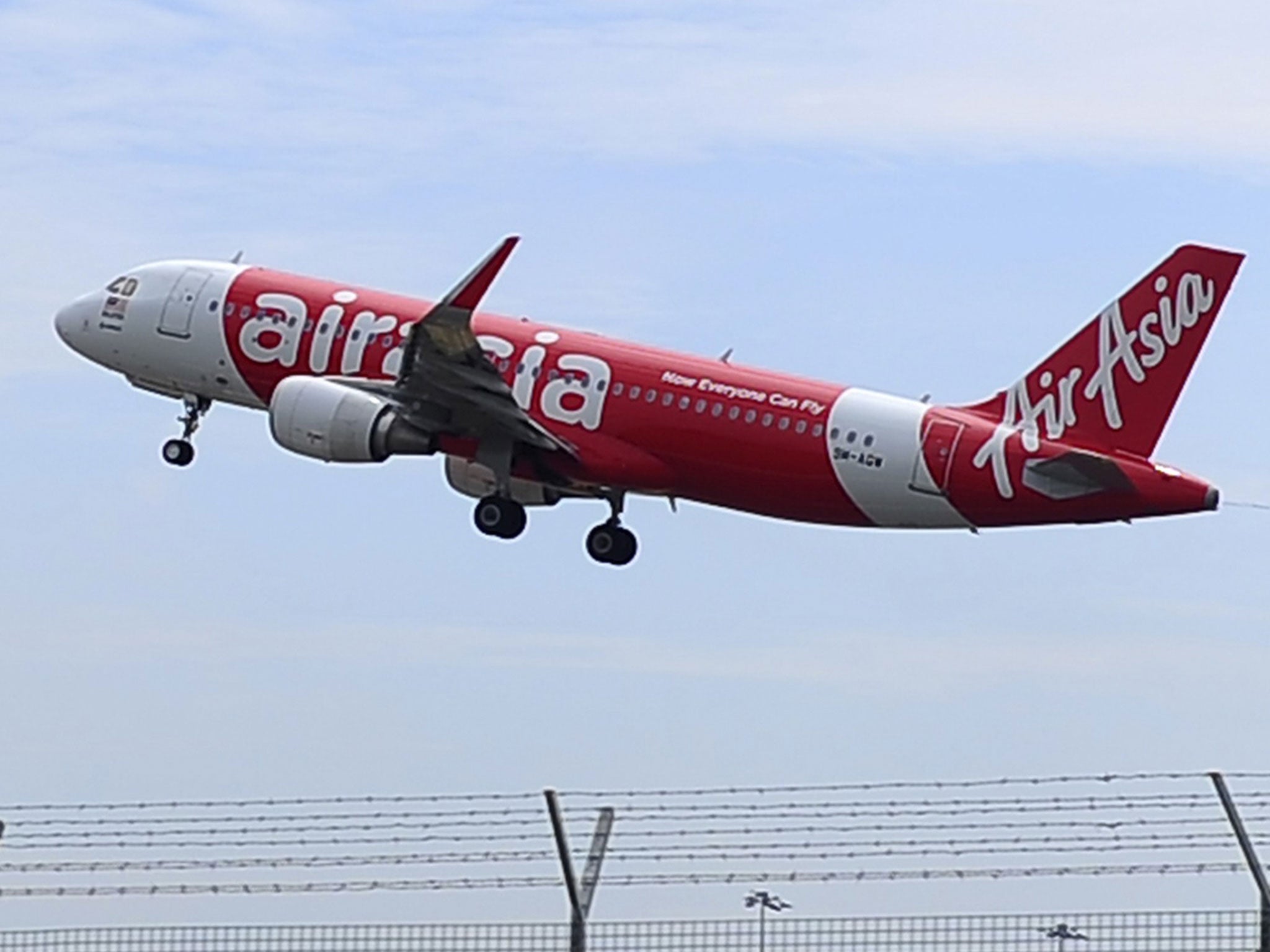AirAsia flight QZ8501: Black box recorders 'could take a week to find', claims air safety official
Bad weather has halted the search for the black box flight recorders

Divers looking for the aircraft wreck of an AirAsia jet off the coast of Borneo were unable to continue today due to poor weather while an air safety official said it could take a week to find the black box flight recorders.
Crews were on standby to swim down to a large object, believed to be the Airbus A320-200 aircraft that was carrying 162 passengers, detected by sonar on the ocean floor 30-50 metres (100-165ft) deep.
The plane crashed on Sunday during a journey from the Indonesian city of Surabaya to Singapore and none of the black box “pings” are reported to have been detected since. At least seven bodies have been found along with debris and no survivors have been discovered.
“I am hoping that the latest information is correct and aircraft has been found,” airline boss Tony Fernandes tweeted today. “Please all hope together. This is so important.”
Toos Sanitiyoso, an air safety investigator with the National Committee for Transportation Safety, said he hoped the black box flight data and voice recorders could be found within a week.
Frogman commander Lieutenant Edi Tirkayasa said the weather was making it difficult for the professional rescue divers.
“What is most difficult is finding the location where the plane fell - checking whether the aircraft is really there,” he told Reuters.
“This is very difficult even with sophisticated equipment. With weather like this, who knows. We are still hopeful and optimistic that they’ll find it. They must.”
Investigators are considering the theory that the plane might have stalled as it could have climbed steeply and slowly at a rate of 353 knots to avoid a storm about 40 minutes into the flight.
The plane was travelling at 32,000ft (9,753 metres) and had asked to fly at 38,000ft to avoid bad weather. When air traffic controllers granted permission for a rise to 34,000 feet a few minutes later, they received no response.
A source close to the probe into what happened said radar data appeared to show that the aircraft made an “unbelievably” steep climb before it crashed, possibly pushing it beyond the aircraft’s limits.
“So far, the numbers taken by the radar are unbelievably high. This rate of climb is very high, too high. It appears to be beyond the performance envelope of the aircraft,” he had said.
The source, who declined to be identified, added that more information was needed to come to a firm conclusion.
Join our commenting forum
Join thought-provoking conversations, follow other Independent readers and see their replies
Comments
Bookmark popover
Removed from bookmarks